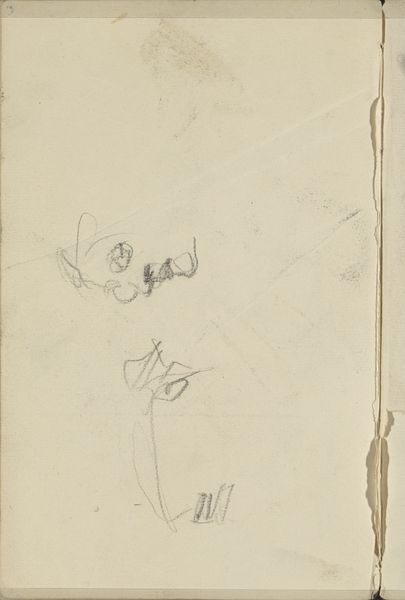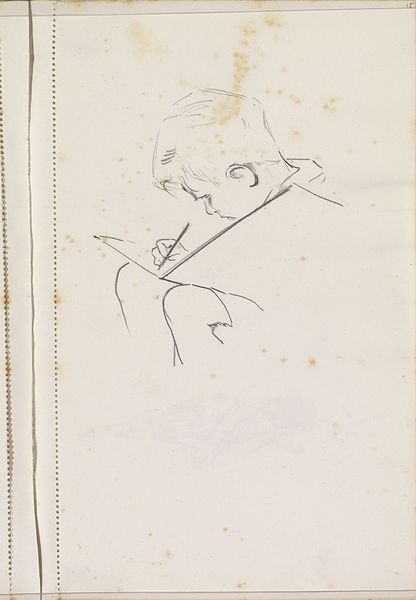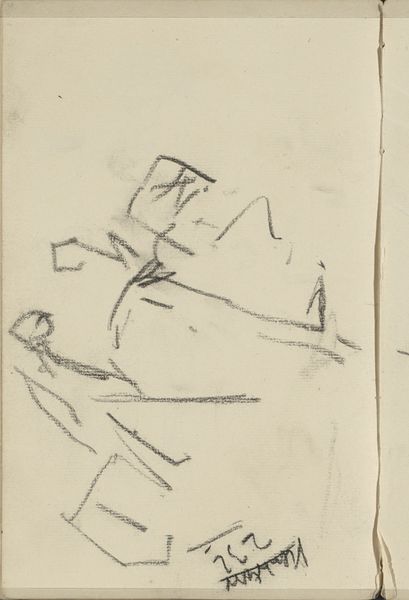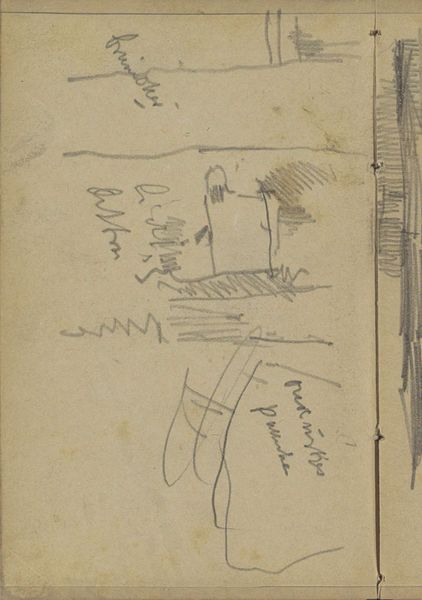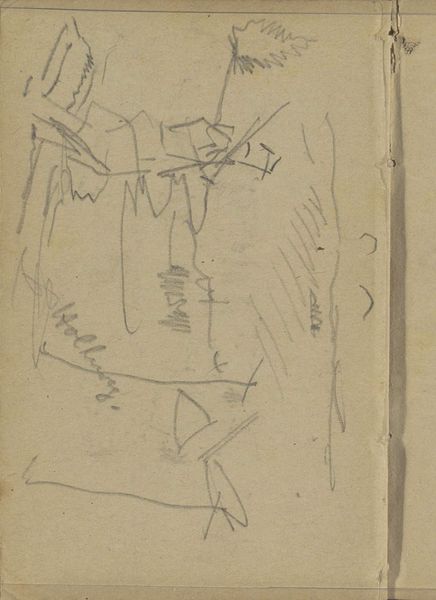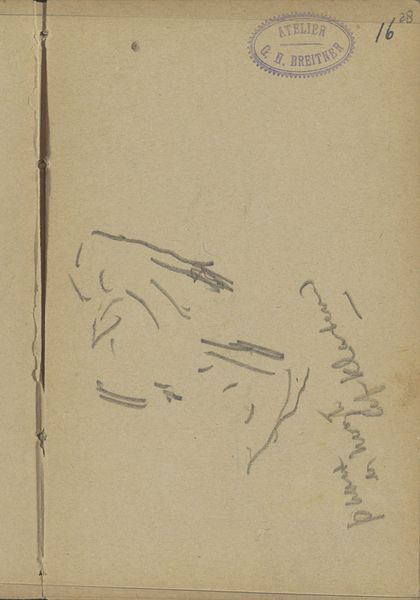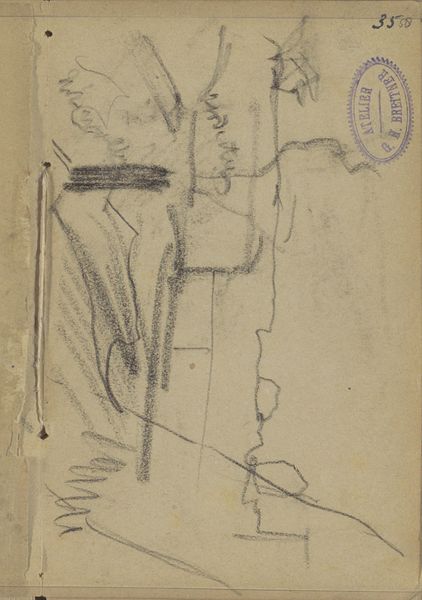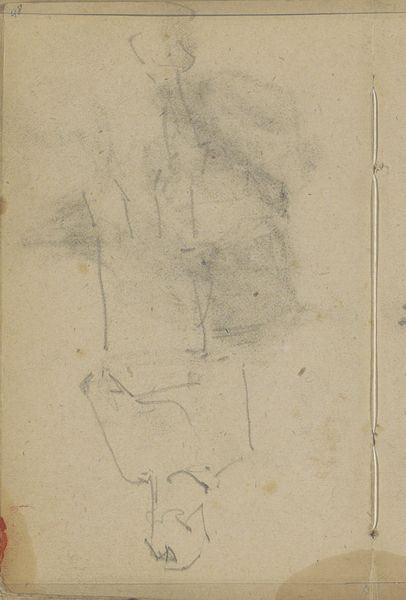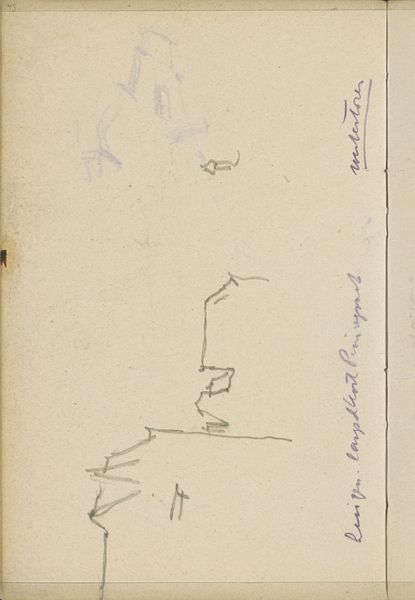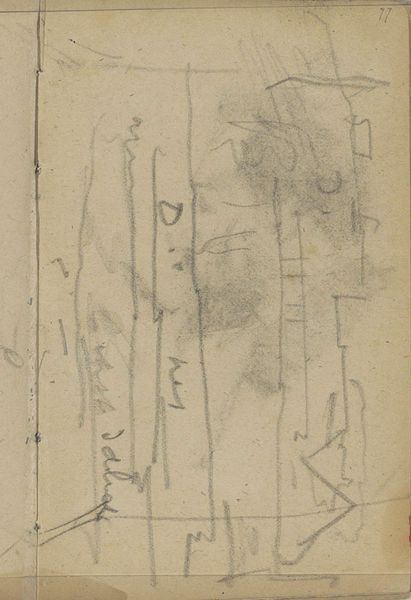
drawing, paper, graphite
#
drawing
#
dutch-golden-age
#
impressionism
#
landscape
#
paper
#
sketch
#
graphite
Copyright: Rijks Museum: Open Domain
Curator: George Hendrik Breitner created this work, titled "Studie", between 1884 and 1886. It’s a drawing done with graphite on paper and currently held here at the Rijksmuseum. Editor: It feels very immediate. The composition seems hastily rendered, as if he were capturing a fleeting impression more than creating a polished depiction of the landscape. Curator: Well, given that Breitner positioned himself as the painter of the streets, recording urban life and its inhabitants, these sketches would’ve served as important, preparatory documents of social reality, precursors to his later, more formal compositions. The labor invested in sketching the Neiuwe Kerkstraat is tangible here. Editor: Tangible indeed! The sparse, almost frenetic application of graphite reminds me of the rawness present in Impressionist works—how fleeting moments can be captured through light and gesture. I do notice, however, how this method also flattens the overall image by obscuring clear spatial depth. Curator: Exactly, and think about the availability of drawing materials and paper during that time. Breitner democratizes image making with his sketches, bypassing expensive painting equipment, offering a direct depiction of life as it happened—a material act. Editor: Even though this might just be a preliminary study, it still manages to establish a certain atmospheric quality. The marks are suggestive, almost like visual cues, allowing us to piece together the cityscape, even if its barely defined. There's a subtle rhythm. Curator: And it serves to underline Breitner’s connection to everyday life. The use of such rudimentary, accessible means—graphite and paper—is fundamental to understanding the artwork's significance in a period that witnessed massive urbanization. He brought artistic expression closer to social consciousness. Editor: True, observing this piece provides insight into the structural underpinning of his better known, fully formed paintings. One grasps not only his final artistic choices, but how such choices ultimately emerged from the materiality of process. Curator: Yes, and considering this drawing within the context of its production and the artist’s intentions makes it all the richer. It prompts us to think beyond aesthetic appreciation and delve into the cultural and economic circumstances shaping Breitner's output. Editor: Examining such qualities heightens our overall reception—giving more comprehensive access not only into Breitner's complete body of work but into the period and environment that gave rise to it.
Comments
No comments
Be the first to comment and join the conversation on the ultimate creative platform.
